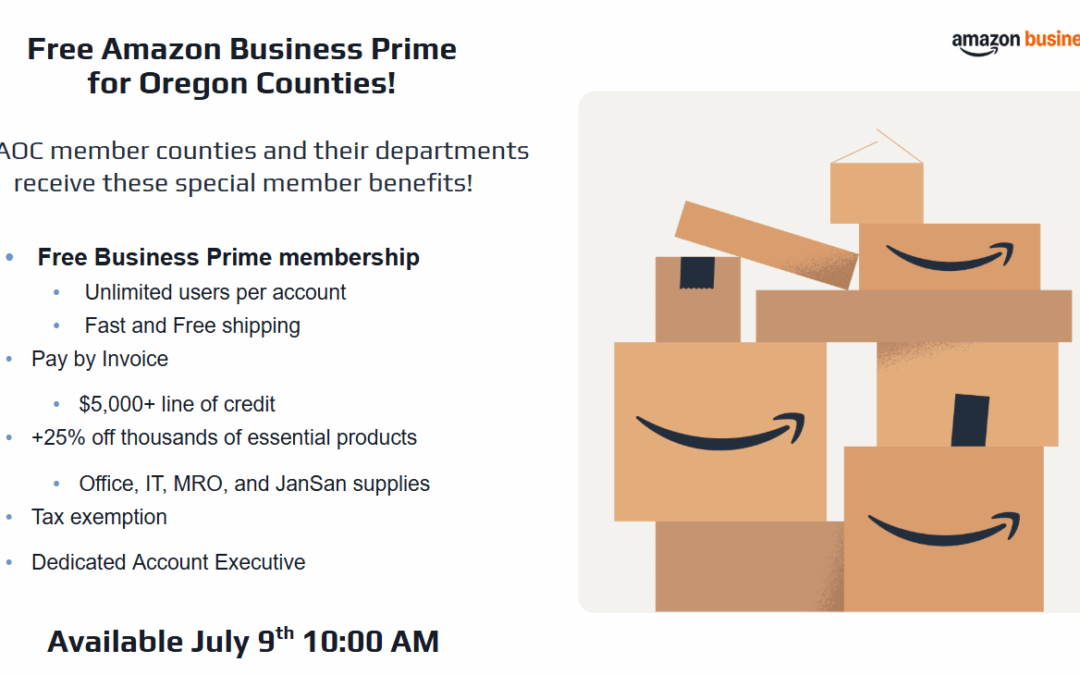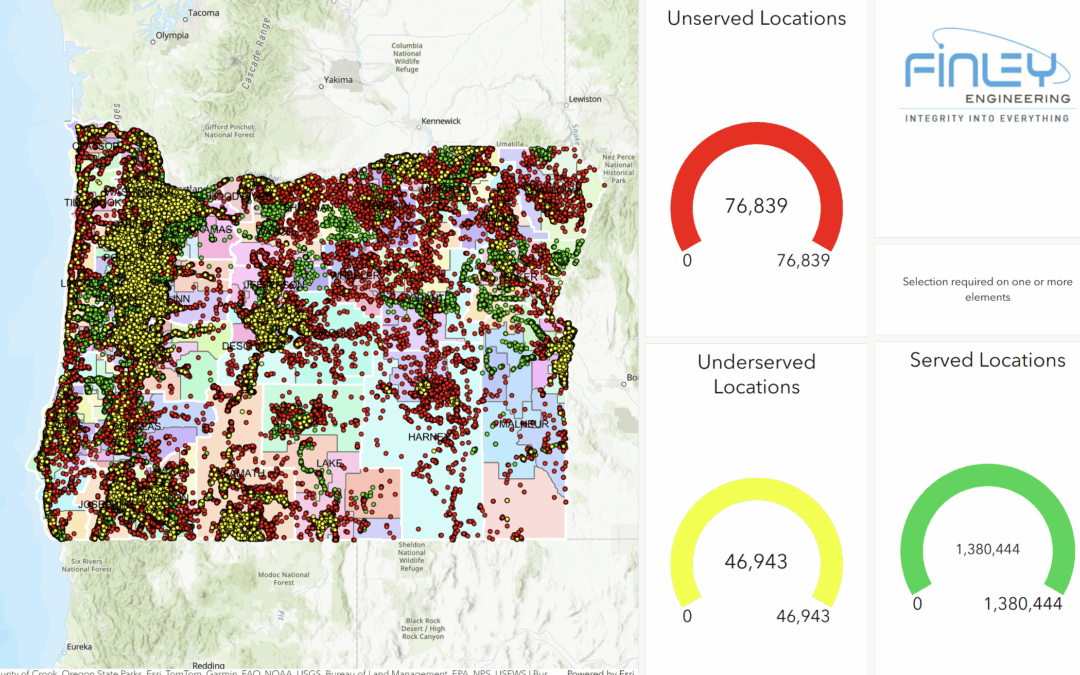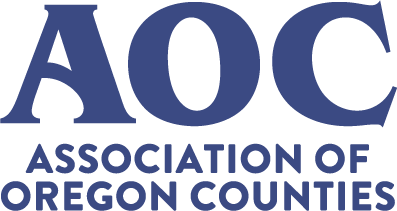
May 30, 2025 | AOC Business Partner
Sponsored content contributed by AOC Business Partner: Transportation and Growth Management Program (TGM)
Oregon is growing—and with that growth comes a powerful opportunity for local governments and communities to shape a more connected, sustainable, and vibrant future. The 2025 Transportation and Growth Management (TGM) Planning Grant application period is officially open, and your community could be one of the next to lead the way in creating thoughtful, inclusive plans for land use and transportation.
Offered through a partnership between the Oregon Department of Transportation (ODOT) and the Department of Land Conservation and Development (DLCD), the TGM program provides funding to help cities, counties, Tribal governments, councils of government, and select special districts plan for livable communities that meet today’s needs while preparing for tomorrow’s challenges.
With approximately $2.5 million available this year, grants typically range between $150,000 and $300,000. Local match contributions are required and may include cash, staff time, direct expenses, or monetized volunteer hours.
Projects must fall under one of two categories:
- Category 1: Transportation System Planning
This includes full or updated Transportation System Plans (TSPs), refinement studies, individual elements such as pedestrian, bicycle, or transit plans, and Safe Routes to School infrastructure plans.
- Category 2: Integrated Land Use and Transportation Planning
Support is available for area plans, downtown plans, and concept plans for areas expanding into urban growth boundaries.
The application deadline is July 31, 2025, and award notifications will be mailed out in September 2025. All application materials, eligibility requirements, and resources can be found on the TGM Planning Grants webpage.
To help applicants navigate the process, the TGM team will host a live informational webinar on June 10, 2025, from 10:30 a.m. to noon via Microsoft Teams. The session will cover updates to the application, how to complete the online form, and common mistakes to avoid. Registration is required to attend.
TGM grants are more than just funding—they’re investments in the vision and values of Oregon communities. Whether you’re aiming to increase mobility, strengthen neighborhood centers, or create safer, more accessible streets, this is your chance to move your plans from concept to action.
For more information or assistance, contact Virginia Elandt at 503-949-1655 or Bill Holmstrom at 971-375-5975.
Oregon’s future is being planned today. Will your community take the lead?
Photo credit: Kathy Kleczek

May 30, 2025 | AOC Business Partner
Sponsored content contributed by AOC Business Partner: Nationwide
Once you have decided how much money to contribute to your Nationwide account each payday, your next decision involves where that money goes.
Retirement plan participants typically decide which asset classes and what percentage of contributions should go into each through a process called asset allocation. There are four major asset classes — stocks, bonds, cash and cash equivalents, and alternatives — each with a different risk and return profile. Generally, the greater the potential risk, the greater the potential return.
Your asset allocation strategy should reflect your financial situation and goals. To create your strategy, you should consider your:
- Financial goals — How well your retirement budget meets your goals may depend on the income you can generate from these investments
- Time horizon — The period between now and when you will begin to convert your investments into income, usually your retirement date
- Risk tolerance — Your comfort level with the possibility of investment loss
Many asset allocation strategies incorporate diversification as a key tactic. Diversification is the process of spreading money across several asset classes and, as your account grows, across several assets in each class. By investing in different asset classes, you reduce the risk of overall investment loss. The theory is, if one asset class underperforms, others may perform better, helping to stabilize returns. Diversification within an asset class helps reduce the risk of loss from a single underperforming fund in that class.
A well-developed asset allocation strategy should adapt as your financial needs and risk tolerance change, helping ensure that your portfolio remains aligned with your goals. You can help accomplish this by committing to regularly reviewing and, when necessary, rebalancing the investments in your Nationwide Supplemental Retirement Plan account.
For assistance in understanding asset allocation and how to use it as an investment strategy, contact your Retirement Specialist. To review or revise your asset allocation, log in to your retirement plan account.

May 30, 2025 | AOC Business Partner
Sponsored content contributed by AOC Business Partner: Covenant Global
Imagine this:
It’s Monday morning. Your county IT staff logs in to find 17 flagged phishing attempts—all blocked automatically. No panicked emails, no scrambling. Just quiet, secure operations. That’s the power of Fortify.
Fortify is a phased cybersecurity hardening program built for counties using Microsoft 365. The first two phases—F1 (Identity & Email Protection) and F2 (Device Security & Visibility)—are often fully funded through Microsoft for qualifying Oregon counties.
Here’s how it works—through real scenarios, inspired by county teams just like yours.
F1: Identity & Email Protection
Imagine this:
Your elections team gets an email from a “state official” asking for voter data. It looks legit. One click could open the door to your network.
But with F1 deployed:
MFA is required for every login. Dangerous emails are filtered by Microsoft Defender. Internal impersonation attempts are shut down before they start.
Outcome: Your inbox becomes a fortress—not a liability.
F2: Device Security & Visibility
Imagine this:
A staff laptop goes missing. You’re not sure if it had sensitive data. It’s a guessing game—and it shouldn’t be.
But with F2 in place:
Every device is tracked through Microsoft Intune. Defender for Endpoint handles security updates and threat detection automatically.
Outcome: No more guessing games—just full control, even in the field.
Why Counties Are Moving Now
When county systems are vulnerable, the impact ripples through entire communities. That’s why Oregon counties are taking advantage of Fortify—without spending additional taxpayer dollars. With Microsoft backing the effort, qualifying counties can get up and running fast—with zero disruption.
Imagine this:
Your IT environment is hardened. Your insurance premiums go down. Your staff feels empowered—not overwhelmed.
Outcome: Security that serves your people, not slows them down
We’re helping Oregon counties access full funding and simple deployment options—before deadlines close. Want to find out if your county qualifies?
📩 Email us at: Sales@covenant.global
🔎 Or schedule a no-cost assessment at: www.covenant.global/contact
Let’s make Oregon more secure—one county at a time.

May 29, 2025 | AOC Business Partner
Purchasing can be challenging and a strain on county budgets. Thanks to a new partner opportunity, Association of Oregon Counties (AOC) members and their county departments can take advantage of free Amazon Business Prime for the entire county which is approximately a $3,499 value.
In addition to receiving free Business Prime, members can access exclusive benefits including a pre-approved $5,000+ line of credit with a pay-by-invoice option. Other benefits include discounts on thousands of products across various counties. By signing up, member counties and their departments can maximize savings in their procurement process.
Member counties who are already paying for Business Prime can receive a prorated refund after signing up. These benefits can be activated on current accounts with no need to create new accounts.
AOC and Amazon Business are offering a webinar on July 9, at 10 a.m., to explain the opportunity and to activate the benefits for participants. Staff responsible for making purchases on behalf of the county are encouraged to register and attend the webinar. Amazon Business account executives will be available during the webinar and afterwards to answer questions and help participants get signed up and activated.
By attending the webinar, members will receive the exclusive AOC Benefit Link and code needed to activate their free Business Prime. The webinar will be presented by Lizette Flore, Amazon Business Senior Account Executive and Tessa Sullivan, Amazon Business Program Manager.
Questions about the webinar or about the business partnership program can be directed to partnerprogram@oregoncounties.org.

Apr 29, 2025 | AOC Business Partner
Sponsored content contributed by AOC Business Partner: Nationwide
In April, Nationwide celebrated National Financial Literacy Month by offering resources to help you spring forward in your financial journey. It’s the perfect opportunity to establish fresh financial habits and grow your financial knowledge.
Whether you are just starting your work career, approaching or living in retirement, there are always ways to improve your financial literacy. National Financial Literacy Month was about helping you improve your financial know-how.
Nationwide and their Supplemental Retirement Plan offer the following tips to help you grow your financial literacy at any age.
College students and early career
- Plant the seeds of savings in your budget
- Cultivate an emergency fund that can cover 6 months of living expenses
- Begin saving for retirement early, and nurture your savings with small increases each year
Midcareer
- Trim your budget as needed to stay on track for your goals
- Evaluate your savings options to determine whether they’re still appropriate for you
- Regularly review your financial goals and track your progress
Nearing retirement
- Start planning a retirement budget that accounts for changes in income and expenses
- Grow an emergency savings fund that can cover 1 to 2 years of expenses
- Log in to your Nationwide Retirement Plan account
- Use My Income & Retirement PlannerSM to help you plan a withdrawal strategy
- Work with your Retirement Specialist to help your retirement plans blossom at no additional charge
Retirees
- Maintain but adjust your budget as needed
- Consider additional income sources, especially in the early retirement years
- Revise your withdrawal strategy as your financial needs change
- Keep tabs on legislative changes that may affect you
- Complete estate planning to ensure your assets are distributed according to your wishes
These are just a few tips that workers and retirees found helpful. Nationwide can help you put together a financial literacy plan that works for you and your family.
Plant the seeds for a prosperous financial future.
For more information and resources visit Nationwide’s Financial Literacy Month webpage.

Apr 25, 2025 | AOC Business Partner
Sponsored content contributed by AOC Business Partner: Finley
Bringing Better Broadband to Oregon’s Counties
The Broadband Equity, Access, and Deployment (BEAD) Program represents Oregon’s most significant opportunity in a generation to bridge the digital divide. As counties throughout the state evaluate the best ways to deliver high-speed internet to unserved and underserved regions, the Association of Oregon Counties has a vital role to play — and Finley is ready to assist.
What is BEAD?
BEAD is a federal program that aims to expand high-speed internet access for every American, especially in rural and underserved areas. Oregon’s BEAD initiative is managed by the Oregon Broadband Office (OBO), which has divided the state into coverage areas aligned with the school district system.
Oregon received $689 million of funding through BEAD, based on metrics like service availability and need, and is currently deploying those funds. The 2020 SNG report to the OBO highlighted how widespread the need is, particularly in rural counties. This report clearly shows the demand for reliable connectivity and reinforces that Oregon will still fall short even with BEAD funding. Access the OREGON Broadband Study here.
Discover how Finley can help your county connect by clicking on “The Finley Connection.”
Why It Matters to Your County
Your county stands to gain tangible and measurable benefits from BEAD-funded broadband expansion in several ways.
Tourism: By directly contributing $14 billion and 118,000 jobs, tourism and broadband connectivity help to generate revenue for Oregon counties. Increased connectivity and tourism foster an environment that attracts visitors, remote workers, and events, encouraging Oregon’s guests to stay longer and spend more, ultimately enhancing your county’s success.
Improved Metrics: Better connectivity means improved access to healthcare, education, and economic opportunity for all Oregonians.
Agricultural Advancements: Modern agriculture depends on reliable internet, from cattle tracking, wheat storage, production automation, and irrigation systems.
Economic Growth: Studies show a clear link between broadband expansion, increased county GDP, increased tax base, job creation, and long-term generational prosperity. (See: CORI Report)
IoT Innovations: From soil sensors to automated chemical-free weed control to grain bin automation, modern ag tech depends on strong broadband infrastructure.
How Your County Can Shape BEAD’s Success
Depending on goals, resources, and local conditions, counties can engage with BEAD in multiple ways.
Public-Private Partnership: Directly apply for BEAD funding and subcontract providers to meet county-set goals.
Public Ownership: Apply to OBO to build a publicly operated broadband network.
Commit Matching Funds: Facilitate a local RFI or RFP process and back the provider(s) who align with your county’s priorities.
Show Support: Provide letters of support or advocacy for private applicants requesting funding.
Each approach offers benefits, but also complexities.
What Comes Next?
Now is the time for counties to take action:
Engage with the OBO: Learn the latest on your area’s eligibility and advocate for your community’s unique needs.
Understand the Process: The BEAD program is technical, jargon-heavy, and fast-moving. Ensure you have the right knowledge and allies on your side.
Utilize Expert Partners: This is where Finley can help.
At Finley, we focus on assisting counties like yours in navigating the broadband process—from identifying funding opportunities and forming partnerships to creating strategies that align with local priorities.
We have partnered with clients nationwide, giving us the insight and experience necessary to support your county at every stage. From public-private partnerships to grant writing, engineering design, and community engagement, Finley is your advocate in BEAD.






